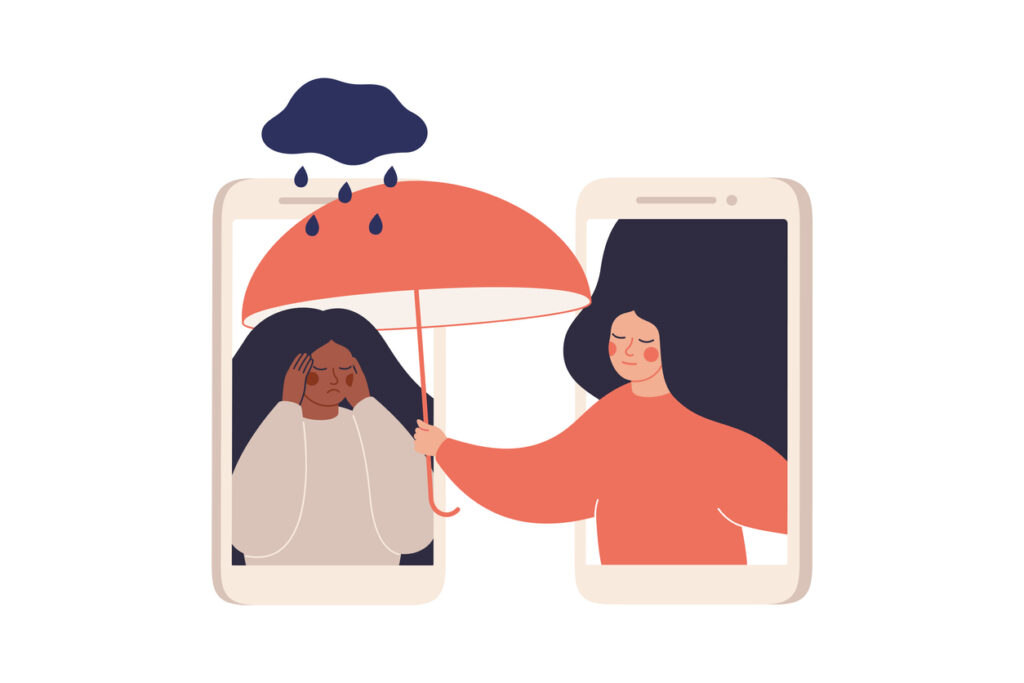For most of my professional life, I’ve struggled in secret with social anxiety – not shyness or self-consciousness, which we all feel at one time or another – I mean Social Anxiety Disorder (SAD), a phobia of social interaction. More specifically, for me, it’s a phobia of blushing.
Early in my career, it led me into cycles of avoidance: staying away from situations that might make me blush. Those situations, of course, always involved people. Meetings, presentations, workshops – even going out for a team lunch was something I worked hard to avoid. Missing out was always preferable to having a nervous meltdown in public.
Things improved over time. As I got older, I developed coping strategies, and I became a manager – although the SAD never truly went away. Every day I spent in an office felt like I was forcing my character to go against its grain. I was never fully at ease, I was always aware of a hesitation inside me, and I didn’t feel at home.
Everyone is different…Let’s face it, though, 21st century work is still modelled on one kind of person – the extrovert who thrives on constant contact.
When Covid-19 arrived and millions of people were sent away to work remotely, I couldn’t quite believe it. I’d often worked from home in the past, when there were problems with trains or my kids got sick. Now here we were, absolutely all of us, working fully from home five days a week.
I know some people have hated it, but for me, the last year of lockdowns has been something close to life changing. Here are the top reasons why WFH is a much better model for someone like me, and why companies need to consider the work environment more closely if they hope to build genuinely neurodiverse teams.
I’m twice as productive and find my flow
Without the daily commute to worry about, I can be showered, fed and at my computer by 8am. Without all the noise and constant interruptions of an open plan office, I find a deeper level of focus and I get a hell of a lot more done. Before the work day is over, I feel I’ve achieved twice as much.
I’ve heard people describing ‘flow’ before – when they’re so absorbed in work they completely lose themselves and any awareness of the world around them. Their performance gets a significant boost. When they leave their flow state, they find they’ve done their best work of the day. Their output is twice as good, in half the time. I’d never experienced flow like that in a crowded workplace. In the office I used to look for places to run away to, so I could concentrate and get things done. I’d sit behind some fake bushes, bent low over my laptop. Sometimes I’d leave the office altogether and sit at the back of a cafe, desperately seeking some of that elusive flow. When I’m at home, in my own space, however, with enough quiet time to think and do freely, the flow comes to me.
I control my SAD, not the other way around
Working remotely has given me a sense of control I’ve been missing for years. The office and the people in it don’t dictate my every move anymore. Yes, there are still meetings, Zoom calls and deadlines we all have to hit. My employers still drive my activity, but mentally and emotionally I’m completely free of a communal social environment. All the things that habitually terrify me, like unexpected conversations or lots of people seeing me blush, are now gone. At home I can control all the variables and there are very few surprises.
Even events that often trouble me the most, like talking in groups or presenting to clients, have become more manageable. I find it easier to speak to people through a computer screen. Being one step removed makes all the difference for me. When I’m talking to lots of people online, it’s harder for them to see me blush. We’re not in the same room and I don’t feel trapped. I’m in less perceived danger and I relax more. My face, my body, my whole existence shrinks down to a little square on a screen. It means I can think better. I present better. I feel protected and my phobia runs out of steam. For people with Social Anxiety Disorder, this is a huge deal.
I don’t want absence – I want balance
Given all I’ve said, you’d probably expect me to advocate for fully remote working. Believe it or not, I don’t think that’s the best answer. There are times when we need to be together and get things done face-to-face. There are lots of times, however, when we really don’t.
What I’m hoping we learn from Covid-19 is how badly we need some balance. We need an even split between collaboration in person and deeper focus alone. What we’re missing right now is a diverse setup that serves diverse personalities. As much as we like to promote an ethos like neurodiversity in theory, our workspaces don’t allow for it in practice.
I once spent a summer mentoring an intern with Tourette’s syndrome. She was fiercely intelligent and creative and could have added a lot to our company. In our office, however, there were zero processes in place to help her work at her best. She asked, if possible, for a dedicated space to call her own: a quiet spot where she’d feel less pressure to suppress her verbal and physical tics. She didn’t need this space all the time – just sometimes – but we didn’t have it in our crowded, loud, constantly teeming office. Ultimately we couldn’t give her what she needed, and she suffered for it. That felt like a real failure.
[cm_form form_id=’cm_65a14c3f5da64′]
The future of work starts here
Everyone is different. We all know this and it’s the most basic of truths. Let’s face it, though, 21st century work is still modelled on one kind of person – the extrovert who thrives on constant contact. Some people just don’t work that way. There’s a reason why writers tend to be quieter people who like their own company. There’s a reason why coders tend to be introverts who work with their headphones on. Their skill sets require a certain degree of social distance and we should be respecting and facilitating that. We have to create more time and more physical space for solitude, immersion, concentration, and reflection. If the pandemic has highlighted anything for me, it’s how little of that has been available all through my career.
We’ve been given a once-in-a-lifetime chance to redress the imbalance. If we ignore it and go back to business as usual, we’ll keep missing out on every person’s true potential.
Interested in this topic? Read How to build a more inclusive space for neurodiversity.
 Redface: How I Learnt To Live With Social Anxiety by Russell Norris is out now, published by Canbury Press, priced £9.99, available online and from all good bookstores.
Redface: How I Learnt To Live With Social Anxiety by Russell Norris is out now, published by Canbury Press, priced £9.99, available online and from all good bookstores.







